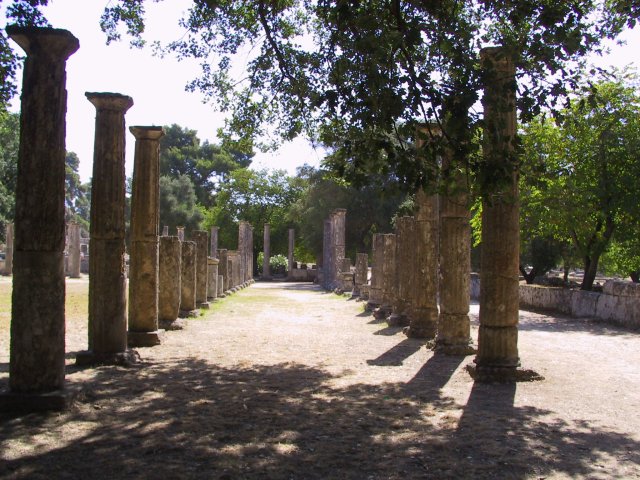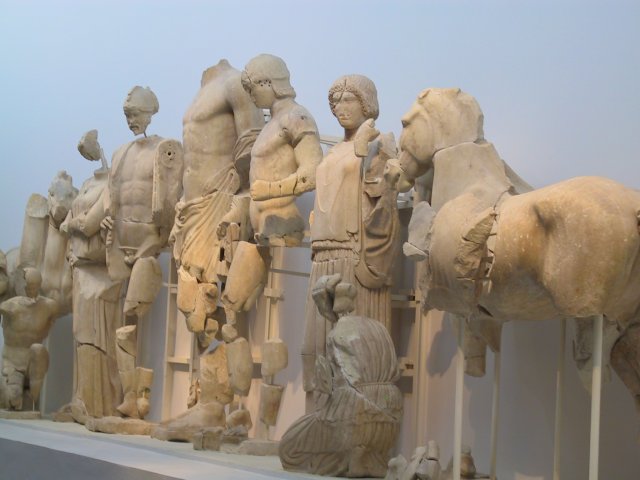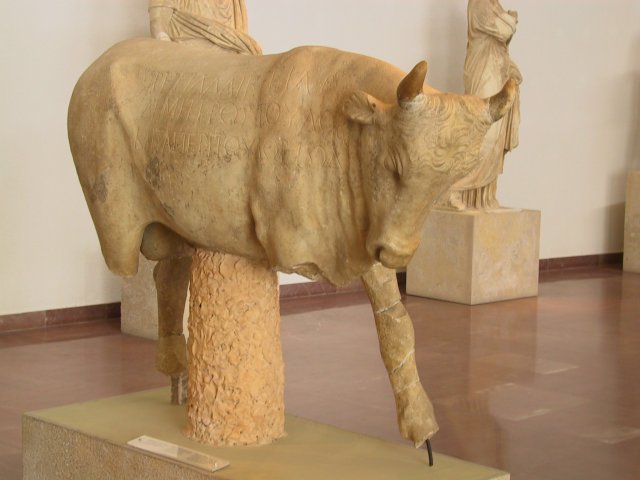Ancient Olympia
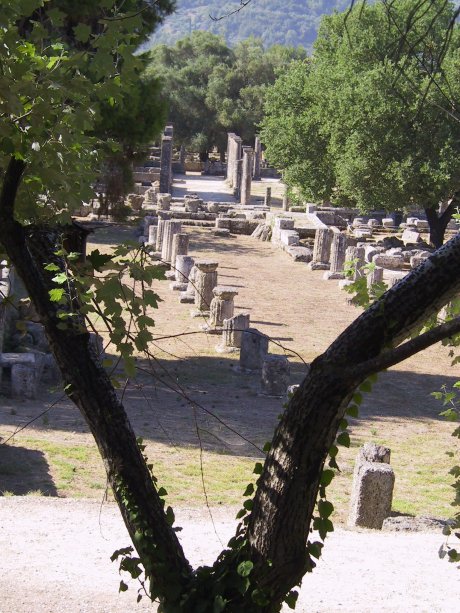 The single track train journey took 50 minutes through agricultural countryside and cost a mere 3€ return. We were both pleasantly surprised by ancient Olympia and the museum. Olympia, referred to in the literature as a sanctuary, flourished from the 10 century. BC to AD 426, the year in which the emperor Theodosius II closed all ancient sanctuaries. It was a major religious, cultural, and sporting centre and a bond that linked Greece with the colonies of the Mediterranean and Black Sea.
The single track train journey took 50 minutes through agricultural countryside and cost a mere 3€ return. We were both pleasantly surprised by ancient Olympia and the museum. Olympia, referred to in the literature as a sanctuary, flourished from the 10 century. BC to AD 426, the year in which the emperor Theodosius II closed all ancient sanctuaries. It was a major religious, cultural, and sporting centre and a bond that linked Greece with the colonies of the Mediterranean and Black Sea.
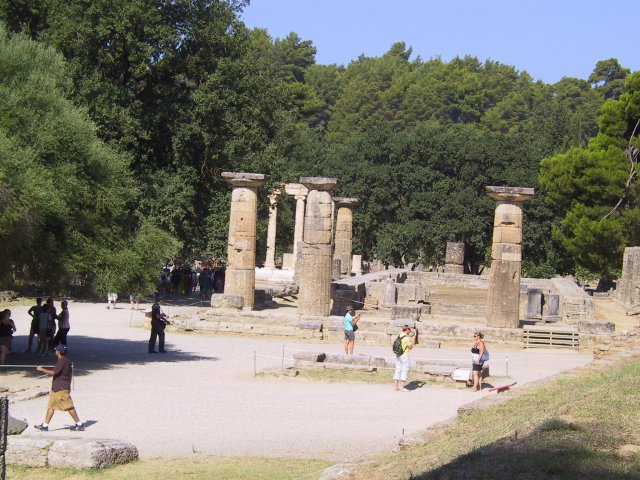 The Altis, the sacred grove at Olympia, took shape in the 10th-9th c. BC, and was devoted mainly to Zeus. The first monumental buildings were erected in the Archaic period (7th-6th c. BC), and new structures were gradually added to meet the continuously growing needs of the sanctuary. The area of the sanctuary received its final form at the end of the 4th c. BC. In the Hellenistic and Roman periods, it underwent a number of modifications dictated by the conditions of the times.
The Altis, the sacred grove at Olympia, took shape in the 10th-9th c. BC, and was devoted mainly to Zeus. The first monumental buildings were erected in the Archaic period (7th-6th c. BC), and new structures were gradually added to meet the continuously growing needs of the sanctuary. The area of the sanctuary received its final form at the end of the 4th c. BC. In the Hellenistic and Roman periods, it underwent a number of modifications dictated by the conditions of the times.

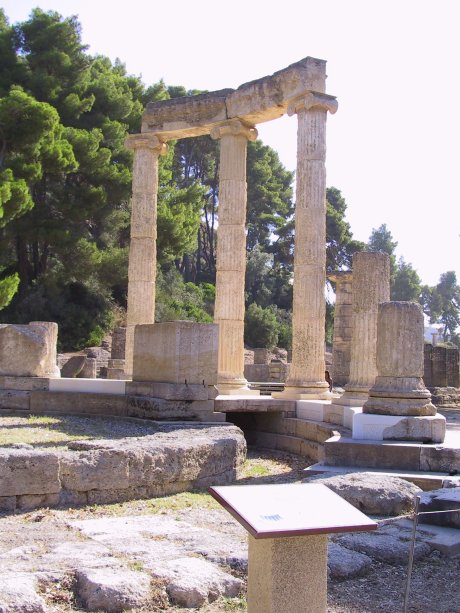 The games, which were held in the area already in prehistoric times, were reorganised in the 8th c. BC by Iphitos, king of Elis, Kleisthenes of Pisa and Lykourgos of Sparta, who instituted the "sacred truce". From that time on, the Olympic games were held every four years and acquired a panhellenic character. The athletes competing in the games had to be true-born, free Greek men. Women were not allowed to watch the games.
The games, which were held in the area already in prehistoric times, were reorganised in the 8th c. BC by Iphitos, king of Elis, Kleisthenes of Pisa and Lykourgos of Sparta, who instituted the "sacred truce". From that time on, the Olympic games were held every four years and acquired a panhellenic character. The athletes competing in the games had to be true-born, free Greek men. Women were not allowed to watch the games.
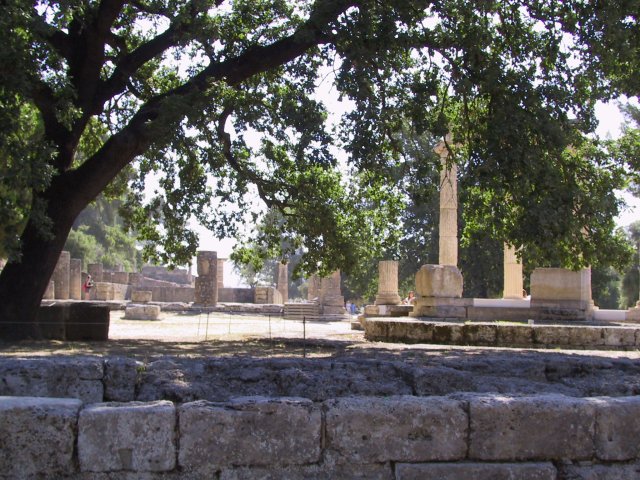 Victors in the games were crowned with a branch of the "beautiful-crowned wild olive tree" that stood near the temple of Zeus. This crown bestowed the greatest honour on the competitor, his family and his native city, and could not be compensated for by either money or high office.
Victors in the games were crowned with a branch of the "beautiful-crowned wild olive tree" that stood near the temple of Zeus. This crown bestowed the greatest honour on the competitor, his family and his native city, and could not be compensated for by either money or high office.
When the pagan religions were suppressed, the institution of the Olympic games, which had flourished for twelve centuries and made a brilliant contribution to the history of sport, fell into disuse.
THE MONUMENTS
- The Gymnasium is a 2nd c. BC building that consists of an open area surrounded by stoas, in which athletes trained for running events and the pentathlon. A large propylon was built at the south end of it at the end of the 2nd c. BC.
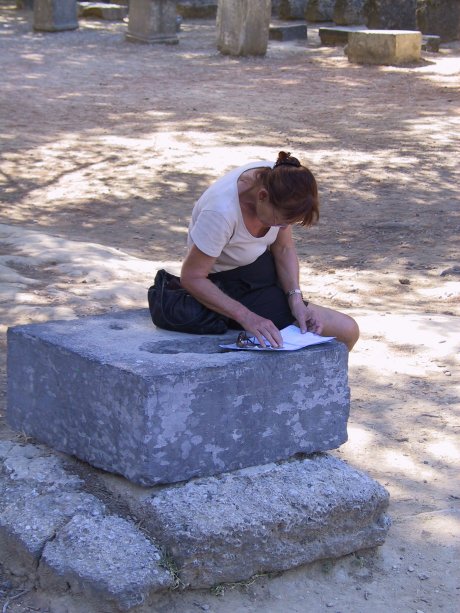
- The Palaestra, a square building dating from the 3rd c. BC, consists of an open peristyle courtyard with rooms round it. It was an area in which athletes trained for wrestling, boxing and jumping.
- The Theikoleon, a rectangular building with a peristyle courtyard, was the official residence of the Theikoloi, the priests of Olympia.
- The Baths were built in the 5th c. BC and modified in later periods.
- The workshop of Pheidias, in which Pheidias created the chryselephantine statue of Zeus that stood in the god's temple. In the 5th c. AD, a Christian basilica was erected on its ruins.
- The Leonidaion was built in 330 BC by Leonidas of Naxos, and was used as a guest-house for official visitors to the sanctuary.
- The Bouleuterion (Council Chamber) was built in the 6th c. BC, and underwent many additions and modifications down to the 2nd c. BC. The athletes swore the required oath before the games at the altar of Zeus Horkios in the Bouleuterion.
- The South Stoa, dating from the 4th c BC, marks the southern boundary of the sanctuary.
- In the South-east Building, dating from the beginning of the 4th c. BC, was an altar of Artemis. In the 1st c AD Nero hit a via on its ruins.
-
The Echo Stoa or Heptaechos separates the Alts from the Stadium. It was built about 350 BC.
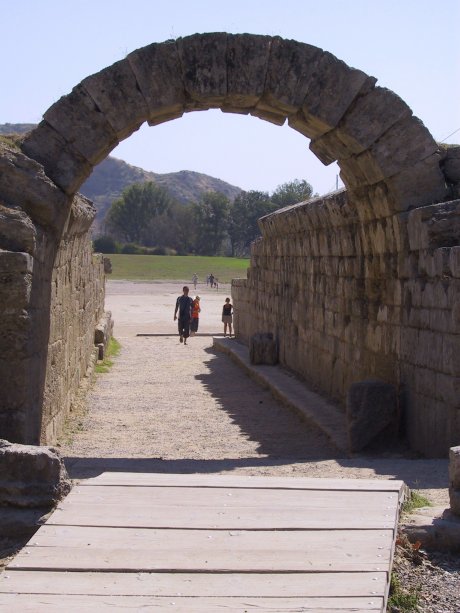
- The Crypt, a vaulted passageway linking the Stadium with the Altis, was built at the end of the 3rd c. BC.
- The Stadium, where the athletic games were held, was 212.54 m long and 28.50 m wide. There were no seats, apart town the stone exedra of the Hellanodikai standing opposite the altar of the goddess Demeter Chamyne, and the embankment could easily seat 45,000 spectators.
- The Hippodrome was to the south of the Stadium. It no longer survives.
- The sixteen bases of Zanes, or statues of Zeus, were dedicated by athletes who were fined for cheating during the games.
-
The Treasuries are small buildings in the form of temples dating from the 6th and 5th c. BC. They housed valuable dedications made in the sanctuary.
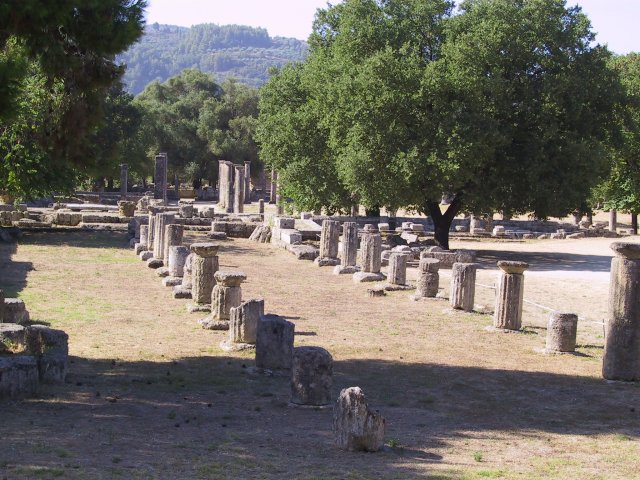
- The Metroon, the temple of Cybele, the Mother of the Gods, dating from the 4th c. BC.
- The Nymphaion, built by Herodes Atticus in AD 1
- The temple of Hera, one of the earliest Doric temples in Greece (600 BC). The Hermes of Praxiteles was found in its cellar.
- The Pelopion, the grove of Pelops, dating from the 5th c BC.
- The large altar of Zeus, to the south-east of the temple of Hera, where sacrifices were held in honour of the god.
- The Philippeion, a circular building begun by Philip I, king of Macedonia, after the battle of Chaironeia (338 BC) and completed by his son, Alexander the Great. It housed five statues of Alexander and his forefathers by the sculptor Leochares.
- The Prytaneion, official residence of the prytaneis, in which was the sacred hearth and the fire that was never extinguished. A 5th c. BC building.
- The temple of Zeus, the most important building in the Altis, was a Doric peripteral building with 6x13 columns, built between 470 and 456 BC. It was the work of Libon, an architect from Elis. In its cellar stood Pheidias's masterpiece, the chryselephantine statue of Zeus. The famous sculptural compositions from the pediments are on display in the Olympia museum
